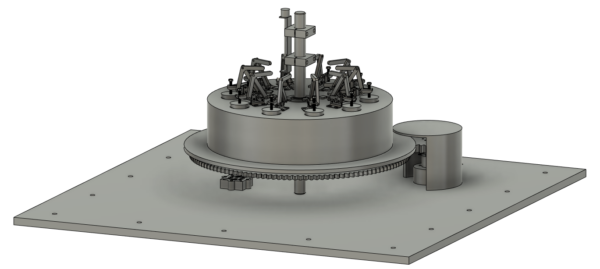Hypothesized Surface: Sample Return from Hypothesized Surfaces – RIT – A
“18977 – NASA Psyche Sample Containment”
INSTITUTION
Rochester Institute of Technology (RIT)
CLASS
Tungsten Class (2023 – 2024)
STUDENT TEAM
Raina Barboza, Mechanical Engineering
Ilker Bilgen, Mechanical Engineering
Anthony Caropreso, Mechanical Engineering
Erin Gillette, Mechanical Engineering
Emily Lawton, Mechanical Engineering
Aubrey Tarmu, Computer Engineering
Chelsea Taylor, Industrial Engineering
ACADEMIC GUIDANCE
Dr. Carlos Barrios – Academic Guide (RIT)
Dr. Cassie Bowman – Client & NASA Guide
PROJECT DESCRIPTION
We are designing and creating, with guidance from the NASA Psyche Program, a sample return containment device that has the ability to preserve a sample from the metallic asteroid Psyche, either from the surface or underneath. The container will open and close, rotate to accept samples, seal to preserve the sample in the appropriate conditions, and be functional with minimal human interaction. This mechanism must function on all ranges of hypothesized surfaces that may be found on Psyche, including a mostly flat metallic surface, rocky terrain, high-relief metallic craters, and rocky or metallic debris. Our project will require extensive testing to validate the device, as it will experience pressures and temperatures on both asteroid Psyche and reentry to Earth, as well as gravity in the environment of space.


